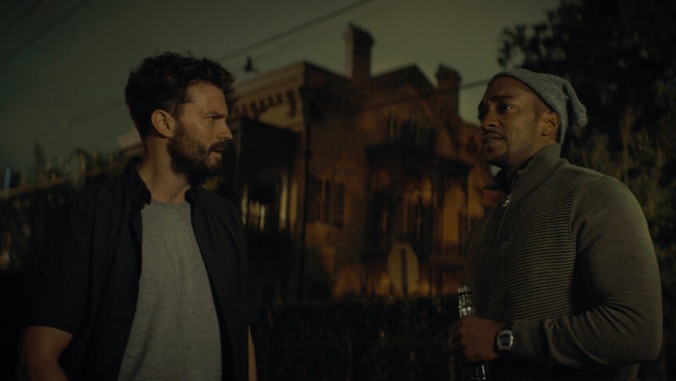A beloved indie duo levels up with the time-traveling genre bender Synchronic


Note: The writer of this review watched Synchronic from home on a digital screener. Before making the decision to see it—or any other film—in a movie theater, please consider the health risks involved. Here’s an interview on the matter with scientific experts.
For much of their career, Justin Benson and Aaron Moorhead have been a bit of a one-man band. (Technically they’re two men, but that’s not the idiom, is it?) Benson handles the scripts, Moorhead serves as cinematographer, and together they produce, edit, and direct. Early on, they even did their own effects. This hands-on approach has allowed the two to carve out their own niche in the world of independent cinema, making sci-fi/horror genre benders whose savvy far outstrips their budgets. Often, these sort of films are seen as “calling cards” for higher-profile studio work—an outcome that can go one way or another. But, in characteristically self-sufficient fashion, Benson and Moorhead have found a way to expand their scope without losing their voices in the process.
Synchronic, the duo’s latest, adds two new elements to the Benson/Moorhead formula: movie stars and a Hollywood ending. The latter is obviously not something that can be discussed in anything but the vaguest terms in a movie review, and the weaker of the two additions besides. So let’s concentrate on the movie stars for now. Anthony Mackie and Jamie Dornan star, respectively, as Steve and Dennis, best friends and paramedics who have seen some seriously strange things working the night shift in New Orleans. But there’s a new phenomenon on the streets, one that makes the botched voodoo rituals and heroin overdoses they normally deal with look tame. It’s a drug called Synchronic, a synthetic compound described by one user as “bootleg ayuchasa” that reduces one user to ashes and another into a grisly pile of dismembered limbs at the bottom of a motel elevator shaft.
Where things really start to get complicated is when Dennis’ 18-year-old daughter, Brianna (Ally Ioannides), gets involved, vanishing completely after taking a dose of Synchronic at a party. In the wake of that accident, Steve buys up the remaining supply of the drug—for which, due to a unique set of medical circumstances, he’s the perfect guinea pig. That’s where the film starts to pull in threads about the pineal gland, and time travel, and relationship drama, and a sweet, shaggy dog named Hawking. There may in fact be too many of these threads, although screenwriter Benson does tie them all together by the end of the film. But it does necessitate prioritizing some themes over others, as well as the insertion of at least one character who appears to explain what’s going on before disappearing again.
When the dust has settled, what stands out is Mackie, who gives his character a sympathetic intelligence even when he’s driven to hard-drinking, bitterly cynical despair. Dornan, meanwhile, is unusually animated as family man Dennis, who likes to complain about his relationship issues even when his terminally single best friend really doesn’t want to hear about them. The chemistry between the actors makes the emotional chasm that grows between their characters more painful—and more regrettable, as they begin to spend less and less time together on screen. Meanwhile, Benson’s script has moved on to other ideas, like the unique dangers of time-traveling while Black. As Mackie puts it at one point, “The past fucking sucks, man!”
Benson and Moorhead have always prioritized the relationships between their characters, be they romantic (2015’s Spring), platonic (2012’s Resolution), or familial (2017’s The Endless). That theme is accompanied here by another signature: trippy, liquefied ripples of CGI that read a bit like a more sophisticated version of one of those Mind’s Eye videos from the early ’90s. (They’re handled by the prestigious French firm BUF, though Moorhead is credited with “additional VFX.” Guess he couldn’t resist tinkering a little.) Similarly, Moorhead’s cinematography makes great use of the film’s Garden District setting, gliding over the city in drone shots reminiscent of the central California vistas in The Endless.
That being said, another of the duo’s signatures, at least up until this point, has been haunting ambiguity. Synchronic does allow its symbolism to grow relatively organically, but in terms of character arc and parting message, this film is far more conventional than those that have come before. And a little something is lost in these broader strokes, particularly because they seem to have been self-imposed. Still, put next to a film like Netflix’s Project Power—which shares its setting and its basic premise with Synchronic—this is still an exceptionally intelligent and well-crafted genre work.